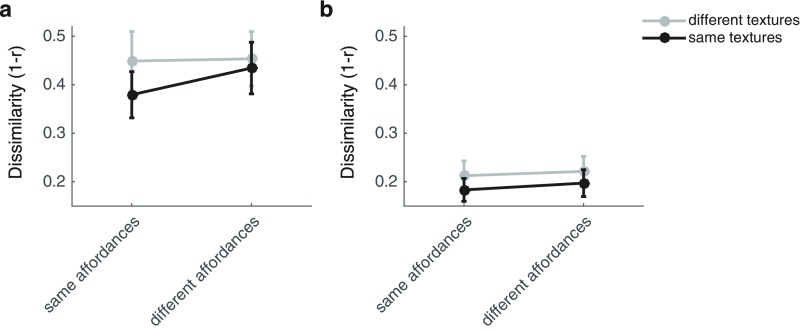Fig. S4.
Coding of navigational affordances and textural features in artificially rendered environments. (A) Cross-run measures of neural dissimilarity in the PPA. A repeated-measures ANOVA showed significant main effects of textures [F(1, 11) = 7.61, P = 0.019] and affordances [F(1, 11) = 14.74, P = 0.003] and a trend toward an interaction of these factors [F(1, 11) = 3.99, P = 0.071]. Post hoc t tests showed that the effect of affordance coding was only significant for environments with the same textures [t(11) = 4.01, P = 0.001] but not for environments with different textures [t(11) = 0.30, P = 0.385]. (B) Cross-run measures of neural dissimilarity in the OPA. A repeated-measures ANOVA showed significant main effects of textures [F(1, 11) = 8.86, P = 0.013] and affordances [F(1, 11) = 10.24, P = 0.008] and no evidence for an interaction of these factors [F(1, 11) = 0.50, P = 0.494]. Post hoc t tests showed that the effect of affordance coding was significant both for environments with the same textures [t(11) = 2.24, P = 0.023] and for environments with different textures [t(11) = 2.52, P = 0.014]. Error bars represent ± 1 SEM.

